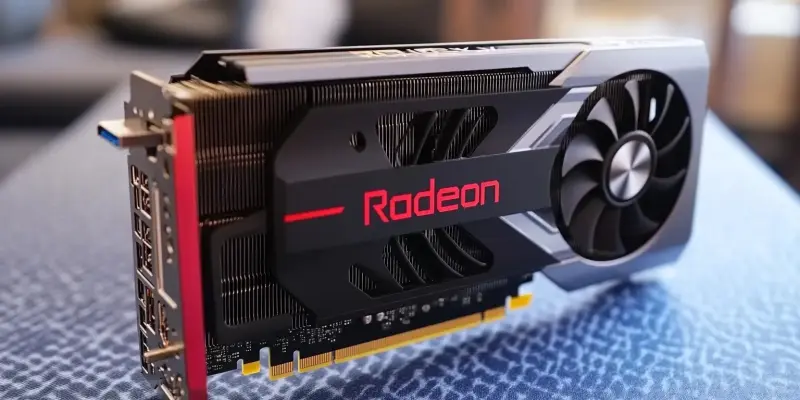In a significant move that increases competition in the mainstream GPU segment, AMD is gearing up to introduce the Radeon RX 9060 XT in Q2 2025, setting the stage for a head-to-head clash with NVIDIA’s RTX 5060 Ti. The anticipation around these GPUs is building, given their promise to combine performance and affordability, making them appealing to budget-conscious consumers. AMD’s strategy is clear: to offer the RX 9060 XT in two VRAM configurations, 8 GB and 16 GB, which is a direct response to NVIDIA’s similar VRAM offerings for their GeForce RTX 5060 Ti series.
Aligning with Market Demands
The AMD Radeon RX 9060 XT has already made appearances in Eurasian Economic Commission (EEC) listings, bolstering its expected launch and rumored specifications. The GPU will be built on the Navi 44 GPU silicon, which is designed to cater to the budget-friendly segment without severely compromising performance. This positioning aims to leverage AMD’s established reputation for delivering value-driven products while strategically aligning with NVIDIA’s configuration. Notable mentions in the listings include models from Acer, such as the Acer Predator Bifrost Radeon RX 9060 XT, suggesting a collaborative approach to marketing and distribution. With this release, AMD aims to directly compete with the RTX 5060 Ti, both in terms of pricing and technical specifications, ensuring there’s a suitable option for every gamer and tech enthusiast.
Competitive Dynamics and Market Impact
AMD is making significant waves in the competitive GPU market by planning to launch the Radeon RX 9060 XT in the second quarter of 2025. This highly anticipated release sets the stage for fierce competition with NVIDIA’s RTX 5060 Ti. Both tech giants aim to capture the interest of budget-conscious consumers by promising a blend of impressive performance and affordability. AMD’s strategic approach involves offering the RX 9060 XT in two distinct VRAM configurations, 8 GB and 16 GB. This tactic is a direct response to NVIDIA’s VRAM options for their GeForce RTX 5060 Ti series, showing that AMD is serious about matching and exceeding their rival’s offerings. With both companies striving to deliver superior quality at competitive prices, consumers stand to benefit from the increased options and innovation. The release of these GPUs is expected to intensify the competition, pushing technological advancements in the industry even further and shaping the future of gaming and computing graphics.

